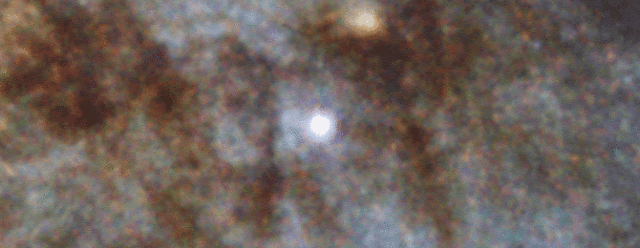Light Echo around SN 2014J in M82
Voices reverberating off mountains and the sound of footsteps
bouncing off walls are examples of an echo. Echoes happen when sound
waves ricochet off surfaces and return to the listener.
Space has its own version of an echo. It’s not made with sound but with light, and occurs when light bounces off dust clouds.
The Hubble telescope has just captured one of these cosmic echoes,
called a “light echo,” in the nearby starburst galaxy M82, located 11.4
million light-years away. A movie assembled from more than two years’
worth of Hubble images reveals an expanding shell of light from a
supernova explosion sweeping through interstellar space three years
after the stellar blast was discovered. The “echoing” light looks like a
ripple expanding on a pond. The supernova, called SN 2014J, was
discovered on Jan. 21, 2014.
A light echo occurs because light from the stellar blast travels
different distances to arrive at Earth. Some light comes to Earth
directly from the supernova blast. Other light is delayed because it
travels indirectly. In this case, the light is bouncing off a huge dust
cloud that extends 300 to 1,600 light-years around the supernova and is
being reflected toward Earth.
So far, astronomers have spotted only 15 light echoes around
supernovae outside our Milky Way galaxy. Light echo detections from
supernovae are rarely seen because they must be nearby for a telescope
to resolve them.
Related Links
This site is not responsible for content found on external links
Contact
Donna Weaver / Ray Villard
Space Telescope Science Institute, Baltimore, Maryland
410-338-4493 / 410-338-4514
dweaver@stsci.edu / villard@stsci.edu
Yi Yang
Weizmann Institute of Science, Rehovot, Israel
972-8-934-6505
yi.yang@weizmann.ac.il
Space Telescope Science Institute, Baltimore, Maryland
410-338-4493 / 410-338-4514
dweaver@stsci.edu / villard@stsci.edu
Yi Yang
Weizmann Institute of Science, Rehovot, Israel
972-8-934-6505
yi.yang@weizmann.ac.il
Source: HubbleSite/News

